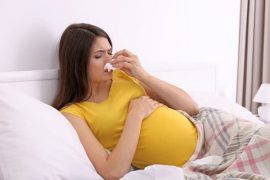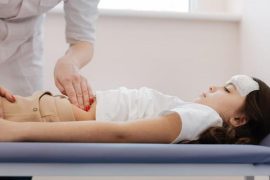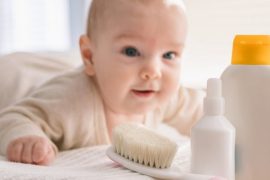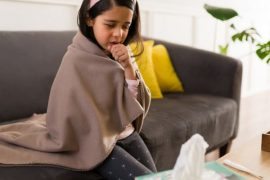Cough in an infant – is a doctor’s consultation always necessary?
The cough reflex is designed to clear the airways of any substances that obstruct breathing. Usually occurs with upper respiratory tract infections, colds, bronchitis, or flu. Sometimes a cough is a remnant of an illness and does not pose a health hazard. However, in the case of such a small child, it is best to consult a doctor about symptoms, even if you have a wet cough but no fever. The key to treatment is the correct diagnosis of the type of cough: wet or dry, in order to choose the appropriate treatment.
If your toddler’s cough is accompanied by the characteristic sound of “tearing” airway secretions, you are dealing with a wet cough. In this way, the child’s body tries to get rid of residual secretions. A number of treatment methods or the administration of expectorant drugs can support this process: drops, syrups intended for babies.
Follow your child as soon as additional symptoms appear or there is no noticeable improvement with home remedies, and make an appointment with the doctor.
Moist cough in infant

1) Frequent feeding
Whether you are breastfeeding or formula feeding, try to feed more often. In the case of infections, the body needs many fluids, and milk can soothe an irritated throat. Adequate hydration will help prevent secretions from thickening and accumulating in the nose and bronchi.
2) Inhalation
Frequent inhalation will speed up healing and bring relief to your child. Infants are advised to use a nebulizer, an electric inhaler that is very easy to use. The container is filled with saline or medicine, and the device turns it into a fine mist, which is injected through a mask worn over the child’s face. The baby is inhaled in a semi-sitting position – three times a day for no more than 10 minutes.
Alternatively, you can fill the tub with hot water and let your child breathe in warm air while the bathroom is closed. However, if you think about how much it costs, it is easier and cheaper to use a nebulizer that can serve the whole family for years, and not just as a device for a child’s wet cough.
3) Patting
Tapping can be used immediately after inhalation. This procedure is safe even for newborns. Facilitates the separation of residual secretions, and improves the blood supply to the lungs.
We put the baby on his knees with his head below the body and pat on the back with a palm rolled into a boat (with the tips of the ribs to the shoulders, along the spine).
4) Cleansing the nose
You can help your little one by cleaning their nose, which will make breathing easier and help deal with the problem of excess discharge.
5) Air humidification
Turning on a humidifier at night is helpful for colds, as it makes it easier for your little one to fall asleep. In addition to temporary use, it is worth preparing a place for it on the shelf for the heating period – that is, in Ukrainian winters for about six months, radiators dry the air, and irritate the throat of households, this issue must be approached with caution.
6) Keep your head up!
During sleep, the baby’s head should be higher than the rest of the body. The tilt can be achieved by placing a rolled-up blanket under the mattress or by placing books under the feet of the bed on the side of the headboard.
The doctor’s word – how to treat a wet cough in a baby?
As a rule, respiratory tract infections in children are caused mainly by viruses and therefore require only symptomatic treatment.
However, it should be remembered that in the case of newborns and infants, even a seemingly insignificant infection is an indication for consulting a doctor, since it requires differential diagnosis and especially the exclusion of pneumonia. This is mainly due to the structure of the airways – the younger the child, the shorter and narrower they are, so the secretion remaining during the infection can cause respiratory distress. The airways are also more swollen.
Prevention of infection is, first, adherence to correct hygiene habits (for example, covering the nose and mouth when coughing), a correct lifestyle, including good nutrition, adequate sleep, walking, avoiding unnecessary antibiotic therapy and preventive vaccinations.








